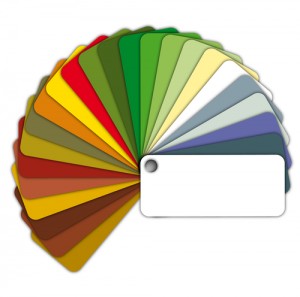
Matching issues are frequently problematic when storms damage only portions of an insured structure’s exterior and it proves impossible to replace the damaged sections with material that is an exact match for the rest of the building’s roof or siding. Earlier this month, the Minnesota Supreme Court held that the phrase “comparable material and quality” means material that is suitable for matching; with respect to color, a reasonable match – not an identical match – is all that is required. In Cedar Bluff Townhome Condominium Ass’n. v. American Family Mut. Ins. Co., – N.W.2d – , 2014 WL 7156914, 2014 Minn. LEXIS 661 (Minn., Dec. 17, 2014), however, the court held that that meant that all of the siding on 20 buildings had to be replaced to avoid a color mismatch even though less than 2% of it had actually sustained hail damage.
The insured, Cedar Bluff Townhome Condominium Association, owned a residential complex that sustained hail damage in October of 2011. There was at least some siding damage to each building. The siding panels were 15 square feet in size, and between one and ten panels were damaged on each structure. Overall, however, less than 2% of the siding in the complex as a whole had actually been damaged by hail.
The policy issued by American Family Mutual Insurance Company afforded coverage for “direct physical loss of or damage to Covered Property,” and there was a Loss Payment clause that obligated the carrier to pay “the cost of repairing or replacing the lost or damaged property.” The contract of insurance was also written on a replacement cost basis, and it recited that replacement cost was determined based on the cost to replace the lost or damaged property with other property “of comparable material and quality.” The siding was 11 years old, and the color of the panels had faded. The manufacturer had replacement panels that were identical in model name, size, texture, and installation methodology, but they were not available in a color that matched the faded siding. American Family offered to pay $6,800 to replace those panels that had actually been damaged by hail, but Cedar Bluff sought over $361,000 to replace all of the 20 buildings’ siding.
An appraisal panel sided with the policyholder, but American Family refused to pay, arguing that the award constituted an unauthorized coverage determination. Litigation followed, and the trial court granted summary judgment to the insurer. The state’s intermediate level court then reversed, and the matter proceeded to Minnesota’s highest tribunal.
On December 17th, the state Supreme Court affirmed in a unanimous opinion written by Justice Alan C. Page. The threshold question was the meaning of “comparable material and quality.” The insurer conceded that the term connoted “some degree of color match,” admitting that it could not meet its obligations by paying for red siding on an otherwise yellow building, but it argued that the term “comparable” should be construed to mean similar rather than identical. The court held, however, that:
the plain meaning of the phrase “comparable material and quality” is material that is suitable for matching. Thus, we conclude that on the spectrum of resemblance, “comparable material and quality” requires something less than an identical color match, but a reasonable color match nonetheless.
Next, the court examined the appraisal award. It noted that the court of appeals had correctly observed that under Minnesota law the appraisal panel had the authority to consider the meaning of phrases such as “comparable material and quality” when determining the amount of loss. It then found that the appraisers had in fact determined that replacement of all of the siding was a reasonable color match, based on: (1) the award’s use of the words “reasonable match” throughout; and (2) the fact that neither the words “identical color match” nor “exact color match” appeared anywhere in the panel’s award.
Finally, Justice Page held that there had been “direct physical loss of or damage to” all of the siding. The insurer argued that the undamaged panels had not sustained physical loss or damage, but the court observed that:
[b]ecause of the color mismatch resulting from the inability to replace the hail-damaged siding panels with siding of “comparable material and quality,” the covered property – Cedar Bluff’s “buildings” – has sustained a “direct, demonstrable, and physical alteration.” Thus, we conclude that the covered property sustained a covered loss.
Notably, the decision did not address the meaning of the term “like kind and quality.” Under the Loss Payment provision, the insurer had the option to “[r]epair, rebuild or replace the property with other property of like kind and quality” instead of paying “the cost of repairing or replacing the lost or damaged property.” American Family chose the latter payment option. The decision therefore noted that the court was not expressing any opinion as to the meaning of “like kind and quality” nor determining whether that phrase was interchangeable with “comparable material and quality.”

